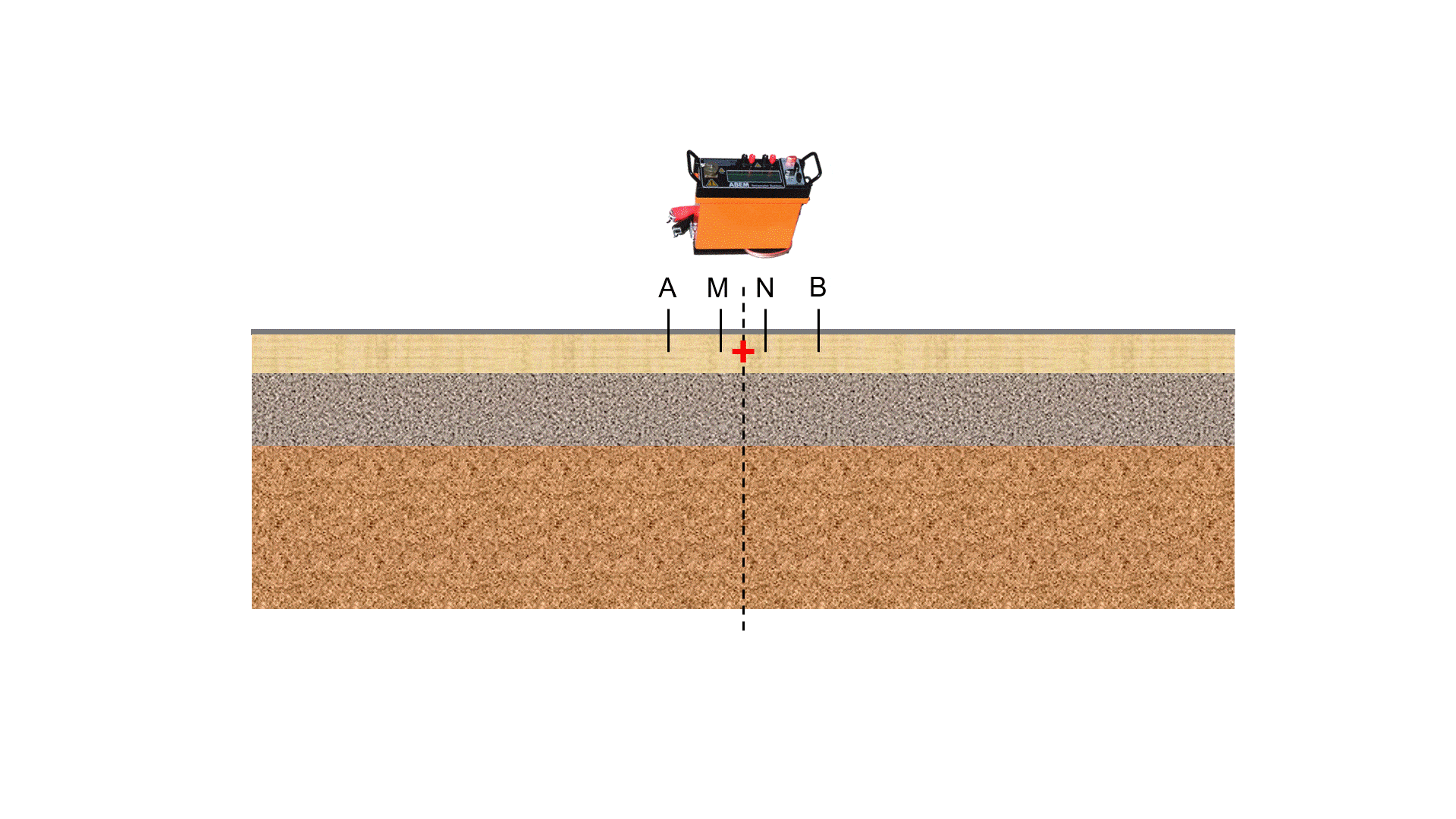What is VES?
VES stands for Vertical Electrical Sounding. This is a measurement technique which collects resistivity data at different depths beneath a single surface location. It is most commonly used for water prospection, but it can be useful in many application areas.
VES is a simple 1D resistivity technique where data are collected in one direction only. The surface position (the x- and y-location) remains fixed and only the depth of the data point varies (the z-position) during the survey.
These “soundings” are good for detecting horizontal layers in the ground. Additionally, if you collect several 1D soundings across a landscape, you can use them to create a coarse 2D profile of the resistivity distribution. Also see 1D, 2D and 3D Measurements.
The field procedure for VES is very simple: starting with four electrodes, two for injecting current (A and B) and two for measuring voltage (M and N), the system is considered to be measuring the electrical properties (apparent resistivity) from a specific ‘focus’ point. This point has unique x-, y- and z-co-ordinates associated with it. By gradually expanding the distance between the current electrodes (A and B), whilst keeping the centre of the four electrode array in a fixed position, the apparent resistivity is measured at increasing depths (i.e. the x- and y-coordinates remain fixed whilst the z-value increases). This measurement technique works well when the subsurface consists of homogeneous horizontal layers, but it is less successful over more complex geological structures.
For more information, see our webinar on VES, available here.
The VES measurement technique. 
Typical result from a VES measurement, a model of the resistivity distribution by depth. 
Note! There is a strong cross-over between VES and TEM measurements, so always consider that as an alternative. TEM is extremely fast by comparison to VES and can reach significantly deeper.
More to read
Application areas
https://www.guidelinegeo.com/application-areas/
Methods
https://www.guidelinegeo.com/resistivity-and-induced-polarization/
Case Stories
https://www.guidelinegeo.com/solutions/case-stories/
Products
https://www.guidelinegeo.com/abem-resistivity-seismics-tem/
